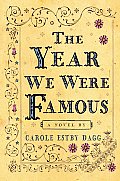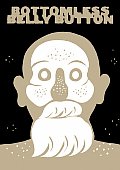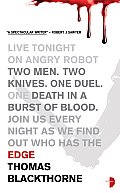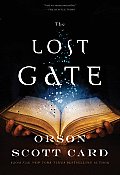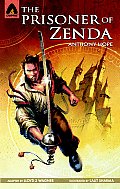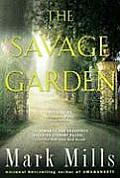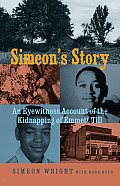Link to this review in the form of a comic strip by geneambaum tagged historical fiction

Click for the full-sized comic
Why I picked it up The author is my friend Emily’s mom. She’s a librarian and a nice lady and I couldn’t wait to read her book. (I got an early copy at my 40th birthday party.)
Why I finished it The violent scene, early on, where Clara uses the gun when a highwayman tries to rob them, which let me know this would be a survival story of sorts.
I’d give it to Brian and Mike, the middle school librarians I used to visit back when I did booktalks professionally, because it’s based on real-life events and people who lived in the Pacific Northwest. They’re both always looking for historical fiction for their school collections. But I won’t be giving it to my wife, Silver, a marathon runner and triathlete, because it might inspire her to take my daughter on a looooooong walk some summer, leaving me in the dust (which I’m allergic to).
Link to this review by geneambaum tagged graphic novel • coming of age
Mother and father Looney call their children home to make an announcement. After forty years of marriage, they’re getting divorced. They’re not in love anymore. Their son Dennis takes the news the hardest. It makes no sense to him, and he believes his parents are making a mistake. His father has always been a hero to him. Dennis wants to be the glue that holds his wife and son together despite recent difficulties. Claire, the Looneys’ daughter, is a single mom concerned with looking after her teenage daughter. The youngest Looney sibling, Peter, has always been alienated from the family. He spends most of the reunion wandering the beach and awkwardly pursuing a young woman he meets there.
Watch the fabulous animated book trailer.
Why I picked it up: It was the big graphic novel I hadn’t read. After seeing an exhibition of Dash Shaw’s art at MOCCA last May, I decided to give it a try.
Why I finished it: The opening pages, images of a plane’s wing as it flies through the sky and then lands, reminded me of the best footage in Up In The Air. And I also kept trying to figure out why Peter is drawn with a cartoonish frog’s head.
I’d give it to: Lynnette, who liked Craig Thompson’s autobiographical Blankets and wanted to know another graphic novel she should read next. I think the Looney family is far enough on this side of normal to interest her.
Link to this review by billba tagged coming of age • science fiction
When I lived in Britain they were very proud that no one had guns, and in the near future that’s apparently still the case. But knives, that’s a different matter. They’ve been fetishized by TV and the government to the point where everyone carries one and dueling is legalized. That’s too bad for Richard Broomhall, who flees his exclusive private school because the streets are safer than a knife duel with a bully. To find him his father, a media baron, enlists Josh, a former Special Forces agent, and Suzanne, Richard’s therapist.
Why I picked it up: Gene and I laughed out loud at the incredible, hysterical cover. It helpfully reads “File under Science Fiction: Devastated Britain, Legalized Dueling, Corporate Atrocity, Save the Children”.
Why I finished it: Josh and Suzanne’s respective training have essentially made them both superheroes. He’s a master of combat and she is practically psychic. And yet it doesn’t feel unrealistic, just a logical extension of modern trends. In the future I look forward to becoming a superhero, too.
I’d give it to: The first person at Emerald City Comic Con who bought a Book Club shirt from us, because the back cover cockily says “If you like this try…” and then lists several books including Fight Club.
Link to this review by dawnrutherford tagged historical fiction • mystery
Jackson Mississippi has a very clear social order in 1962. Beyond the Jim Crow laws is an unspoken set of rules about interactions between white ladies and their hired help.
Fresh out of college, Skeeter is determined to make it as a writer. As she tries to find out more about the beloved maid who raised her then disappeared, she decides to write about the secret suffering, humiliations, and loves of black women who raise white children and often see sweet adoring babies grow to be racists.
Why I picked it up: I’d heard great things about it, and wanted to read it before the movie came out. Plus I’m fascinated with Southern culture and cooking.
Why I finished it: Stockett really brings the time and place to life, showing how white women and black women could spend years together, but couldn’t sit together at the kitchen table to drink coffee. I fell in love with the characters and wanted to see them bridge the gaps that separated them.
I’d give it to: My mom, who unlike Skeeter’s mother, always encourages me to hold out for what is right for me, and would never chase away people I love.
Link to this review by flemtastic tagged fantasy
Danny is a drekka, a powerless kid despised by his magically talented family. Even his younger relatives can overpower him and use magic. Then he discovers that he is a gatemage with the ability to go anywhere via holes he can make in the air. Now any member of one of the magical families spread around the globe, including his own, will kill him on sight.
The orphaned Wad (named for a wad of dough) hides his gatemagery as he skulks around the castle where he has been taken in. He becomes a trusted confidante of the queen, which puts him in the line of fire politically.
Why I picked it up: I loved Card’s Ender’s Game so much I had to read every book he’d published so far (twenty-five at that time). I read every new book he writes within a week of its release.
Why I finished it: Card seems to be at a point in his career where he is creating the most intricate magical rules and exploring the most complex permutations of time travel (see his new book Pathfinder ). There is a dizzying amount of exposition about this world, its magic and its religion, but it is folded into a story that is compelling and epic.
In the afterword, he explains that he laid the foundation for this novel in 1977 with a map and a short story titled “Sandmagic.” He followed that in 2008 with a novella set in the same world, Stonefather. Working out the setting and rules of magic in both helped him figure out the plot and character motivation for this novel. Card claims that he was only able to write it recently despite having envisioned it decades earlier.
I’d give it to: Jeff, because this is a thinking man’s fantasy where the action is secondary to understanding the setting. S.A., who is a smart-aleck like Danny, would appreciate the character’s sassy voice and pranks.
Link to this review by geneambaum tagged graphic novel • classic
Rudolf Rassendyll, a rich English gentleman, visits Ruritania. He finds that he has more than a passing resemblance to the royal family, who are distant relatives. In fact, he’s practically Prince Rudolf’s double. When the Prince is drugged and later kidnapped, Rudolf takes his place (with the help of the Prince’s advisors) to keep the throne from the Prince’s half brother.
Why I picked it up: Heard of the book and the movie, but I’ve never read either.
Why I finished it: This graphic novel adaptation was short enough to keep my interest, and it has a good balance of text boxes and word balloons (bad adaptations often have too much of one or the other) with action sequences scattered throughout the book. Because of the subject matter, it also relies on its art to a large degree — it gives a great sense of time and place.
I’d give it to: Min, who enjoyed DiCaprio in The Man in the Iron Mask and would probably enjoy this light take on another classic that involves a king’s doppelganger.
Link to this review by vanessaborden tagged historical fiction • mystery
Adam, an art history student at Cambridge after World War II, cannot decide a subject for his thesis. His advisor suggests a centuries-old memorial garden at an Italian villa that belongs to an acquaintance. In Italy, the villa’s owner and her granddaughter charm Adam, though he finds the garden disturbing. He begins to uncover clues in its layout and symbology that indicate that its true purpose was not to memorialize the designer’s dead wife, as thought. Immersed in his research, Adam also begins to question a more recent death at the villa.
Why I picked it up: I recently went through an Italy obsession. I read everything from Dante’s Inferno to Under the Tuscan Sun by Frances Mayes. I thought a murder mystery would round out my selection.
Why I finished it: Post-World War II Italy faced many challenges. A country made of city states that had only recently unified had to deal with the ideological clash between fascism and socialism, and face the economic and social aftermath of German occupation and collaboration. Even more captivating were the mythological figures and literary references in the memorial garden. Adam analyzes myths about Flora, Apollo, Hyacinth, Narcissus, and the other figures in the garden to reveal its hidden meaning.
I’d give it to: Kathie, who would find enjoy the humor and gravity in Adam’s relationship with his artistic and irresponsible brother, Harry. His arrival at the villa upsets Adam, but ultimately he needs Harry’s help.
Link to this review by sarahhunt tagged biography • history • nonfiction
This is the first eyewitness account of the abduction of Emmett Till, whose subsequent murder was a turning point in the Civil Rights struggle. Wright was with Till during the incident with the grocery clerk that started the events. Wright saw Till wolf-whistle at the clerk outside and was with him most of his time in the store. But the clerk claimed that Till grabbed her, put his arm around her, asked her for a date and called her “baby.” Wright was in the same bedroom, too terrified to move, when Till was snatched at gunpoint in the middle of the night days later.
Why I picked it up: It is on a few best of 2010 lists.
Why I finished it: Wright brings his childhood vividly to life, including the strict unwritten rules of the Jim Crow south. His family stood up against the violence of their neighbors knowing they couldn’t stay in town, even if it meant leaving the family farm behind.
I’d give it to: Kat, for the many moments that show that this was not just a single violent incident, it created a lifelong psychological scar. Blake, for the moving stories about Wright’s teachers in Chicago, where his family moved, who showed that they cared about him. Mr. Ploszek, his sixth grade teacher, put him in charge of fetching the class’s milk for lunch and later made him a crossing guard, positions of trust that helped Wright blossom. Mr Gnippe, who wasn’t even Wright’s classroom teacher, made time to talk to him about what had happened and expressed concern for Wright and disgust at what had happened. Wright remembers them both more than fifty years later.
Link to this review by flemtastic tagged nonfiction • thriller
An Amur (Siberian) tiger can be ten feet long, weigh 600 pounds, and jump over a ten-foot tall fence from a flatfooted stance. Luckily the unwritten rule of the Russia’s taiga, the cold wastelands where the tiger lives, is that tigers don’t bother humans who don’t bother them. But then a lone poacher, looking to sell tiger parts on the black market, shot a tiger in the leg. The tiger would not rest until it got its revenge. It killed the poacher and ate its fill, leaving only enough slippery lumps to fill a hat.
Once the tiger had a taste for human blood, it wasn’t long before it killed a second person. An urgent call summoned a crack team of backwoodsmen. As they hunted it in thick woods where it could disappear in seconds, they found evidence that the tiger was stalking them, too.
Why I picked it up: It languished in my reading pile, despite an excellent review on NPR. Then a friend talked about it and the tiger scratches on the cover seemed to be calling my name.
Why I finished it: Early in the book this description of the remains of the tiger’s first victim: “It looks at first like a heap of laundry until one sees the boots, luminous stubs of broken bone protruding from the tops, the tattered shirt with an arm still fitted to one of the sleeves.”
I’d give it to: Steve, a Louis L’Amour fan who would appreciate the wild-west nature of the isolated Russian town Sobolonye where citizens were terrorized by this man-eating cat. (Some even found tiger tracks around their windows.) And Lori who would dwell on the sentences that extol the almost mystical qualities and intelligence of the great cats.
